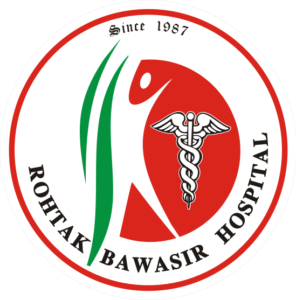Hemorrhoids 101: Understanding Symptoms, Causes, and Treatment Options


Updated on: 4th Jun 2024
Hemorrhoids, commonly known as piles, are swollen veins in the lower rectum and anus. Though uncomfortable and often painful, they are a common condition that affects millions of people worldwide. Understanding the symptoms, causes, and available treatment options can help manage and alleviate this condition effectively. In this guide, we will explore everything you need to know about hemorrhoids, including preventive measures and when to seek medical help.
What Are Hemorrhoids?
Hemorrhoids are inflamed blood vessels located in the anal canal. These veins can swell and become irritated due to increased pressure, leading to discomfort, bleeding, and itching. Hemorrhoids are generally categorized into two types:
Internal Hemorrhoids: Located inside the rectum, internal hemorrhoids are usually painless but may cause bleeding during bowel movements.
External Hemorrhoids: Found under the skin around the anus, external hemorrhoids can be painful and cause swelling, itching, and irritation.
While hemorrhoids can affect anyone, they are particularly common among adults aged 45 to 65, pregnant women, and those who frequently strain during bowel movements.
Common Symptoms of Hemorrhoids

The symptoms of hemorrhoids depend on their type and severity. Understanding the signs can help in early diagnosis and treatment.
Rectal Bleeding: Blood during bowel movements is a common sign of internal hemorrhoids. It often appears as bright red streaks on toilet paper or in the toilet bowl.
Itching and Irritation: External hemorrhoids can cause significant itching around the anus, making it difficult to sit or walk comfortably.
Pain and Discomfort: Pain is more common with external hemorrhoids, especially when sitting or passing stool. Internal hemorrhoids typically do not cause pain unless they prolapse or become strangulated.
Swelling Around the Anus: Swollen lumps near the anus may indicate external hemorrhoids. These lumps can sometimes become thrombosed, meaning they contain clotted blood, which can be extremely painful.
A Feeling of Incomplete Bowel Movement: Hemorrhoids may make you feel as though your bowels haven’t fully emptied, leading to further straining.
What Causes Hemorrhoids?
Several factors can contribute to the development of hemorrhoids. These include lifestyle habits, diet, and medical conditions.
Chronic Constipation or Diarrhea: Both conditions increase the pressure on the blood vessels in the anal canal. Constipation causes straining, while diarrhea leads to frequent bowel movements, both of which can aggravate hemorrhoids.
Pregnancy: The pressure of carrying a baby increases the likelihood of developing hemorrhoids. This is due to hormonal changes, increased blood volume, and the growing uterus pressing on pelvic veins.
Straining During Bowel Movements: Excessive straining, often due to constipation or the need to pass hard stools, is a common cause of hemorrhoids. It puts pressure on the veins in the lower rectum and can lead to swelling.
Sitting for Extended Periods: Whether it’s at work, during travel, or in the bathroom, sitting for long periods can place pressure on the rectal veins, contributing to the formation of hemorrhoids.
Aging: As people age, the tissues supporting the veins in the rectum and anus weaken, making them more susceptible to hemorrhoids.
Obesity: Carrying excess weight can increase pressure on the pelvic veins, leading to the development of hemorrhoids.
Low-Fiber Diet: A diet lacking sufficient fiber can result in constipation and straining, both of which are key contributors to hemorrhoids.
Heavy Lifting: Repeatedly lifting heavy objects can increase abdominal pressure and strain the anal veins.
Diagnosis and When to Seek Medical Help
While hemorrhoids are usually not life-threatening, it’s important to seek medical help if you experience persistent symptoms, especially rectal bleeding. Your doctor may perform a physical examination and, if necessary, recommend further diagnostic procedures such as:
- Digital Rectal Exam: A physical exam of the rectum to check for lumps or other abnormalities.
- Anoscopy: A small tube with a light is inserted into the anus to examine the lining of the rectum and anus.
- Sigmoidoscopy or Colonoscopy: These procedures involve the insertion of a flexible tube with a camera to examine the colon and rectum for any underlying conditions, such as polyps or colorectal cancer.
Treatment Options for Hemorrhoids

There are several treatment options available for hemorrhoids, ranging from home remedies to surgical interventions, depending on the severity of the condition.
1. Home Remedies and Lifestyle Changes
For mild cases of hemorrhoids, home remedies and lifestyle adjustments can provide significant relief.
Increase Fiber Intake: Eating a diet high in fiber (fruits, vegetables, whole grains) helps soften stool, reducing the need to strain during bowel movements. This can alleviate and prevent hemorrhoids.
Stay Hydrated: Drinking plenty of water helps keep stools soft and easier to pass.
Warm Sitz Baths: Soaking the anal area in warm water for 10 to 15 minutes several times a day can reduce swelling and discomfort.
Over-the-Counter Creams and Ointments: Hemorrhoid creams containing hydrocortisone or witch hazel can provide temporary relief from itching and inflammation.
Hemorrhoidectomy: This is the most effective treatment for large external hemorrhoids or prolapsed internal hemorrhoids. The procedure involves the surgical removal of hemorrhoids under anesthesia.
Hemorrhoidopexy (Stapling): This procedure, also known as stapled hemorrhoidectomy, involves repositioning the hemorrhoids back inside the rectum and cutting off their blood supply. This is less painful than traditional hemorrhoidectomy and has a quicker recovery time.
Avoid Prolonged Sitting: Take breaks to stand or walk, especially if your job requires long hours of sitting. Use a cushion when seated to reduce pressure on the anal area.
2. Minimally Invasive Procedures
If home remedies do not provide relief or if the hemorrhoids are more severe, a doctor may recommend minimally invasive treatments.
Rubber Band Ligation: This procedure involves placing a small rubber band around the base of an internal hemorrhoid, cutting off its blood supply. The hemorrhoid shrivels and falls off within a few days.
Sclerotherapy: A chemical solution is injected into the hemorrhoid to shrink it. This method is often used for small internal hemorrhoids.
Coagulation Therapy: Infrared or laser coagulation involves the use of heat to shrink hemorrhoidal tissue. This is often used for internal hemorrhoids.
3. Surgical Procedures
For more severe cases or when other treatments have failed, surgery may be necessary.
Preventing Hemorrhoids

Prevention is always better than treatment. Here are some strategies to reduce the likelihood of developing hemorrhoids:
Eat a High-Fiber Diet: Including more fruits, vegetables, and whole grains in your diet can promote regular bowel movements and prevent constipation.
Exercise Regularly: Physical activity helps stimulate bowel function, reducing the risk of constipation and straining.
Avoid Straining: When using the bathroom, avoid the urge to strain. If you feel constipated, consider using a stool softener or fiber supplement.
Don’t Delay Bowel Movements: Holding in bowel movements can lead to constipation and increased pressure on the rectal veins.
Conclusion
Hemorrhoids, while uncomfortable, are a manageable condition. Understanding the symptoms, causes, and treatment options can make a significant difference in alleviating discomfort and preventing recurrence. Whether through lifestyle changes, home remedies, or medical intervention, effective treatment is available. If you experience persistent or severe symptoms, it’s essential to seek medical advice to ensure timely and appropriate care.
Meet Our Specialists

Dr. Raj Kumar Garg (B.A.M.S.)
40+ Years of Experience

Dr. Rahul Garg (B.A.M.S.)
15+ Years of Experience

